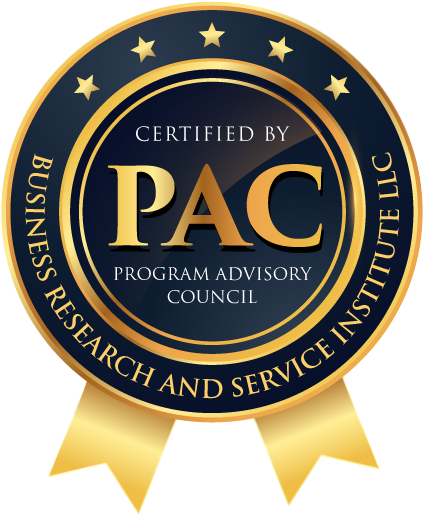For executives at the forefront of supply chain management, achieving seamless operations is more than just a goal—it’s a necessity. In today’s competitive market, even small inefficiencies can ripple across the entire supply chain, affecting costs, customer satisfaction, and profitability. That’s where the Supply Chain Operations Reference model comes into play.
The SCOR model isn’t just another framework—it’s a powerful toolkit designed to help companies measure, manage, and continuously improve supply chain performance. Created by industry experts, SCOR provides a unified approach that aligns processes across the board, offering a full, end-to-end view of the supply chain.
In this guide, we’ll dive into the SCOR model’s core processes, levels, and pillars, showing you how it can provide actionable insights and elevate operational excellence. Whether your goal is to optimize planning, streamline sourcing, or boost agility, SCOR gives you the structure to compete—and succeed—in today’s fast-paced global market.
What is the Supply Chain Operations Reference Model (SCOR)?
SCOR is a best practice model that describes the optimal supply chain structure and process. It was designed by the Supply Chain Council, which became a part of APICS—the Association for Operations Management; this is one of the most well-known models. The purpose of SCOR is to assist corporations in Increasing their supply chain’s efficiency and guaranteeing that customers’ expectations are met.
In essence, SCOR provides a standardized approach to evaluating and enhancing supply chain performance. It covers everything from planning and sourcing to delivering and returning goods. But what sets SCOR apart is its universal language and detailed processes, making it a go-to model for companies worldwide.
Understanding SCOR Model Processes
SCOR organizes supply chain activities into five core processes: PSMDR—Plan, Source, Make, Deliver, and Return. Each process is important in maintaining a proper flow from unprocessed materials to final products.
1. Plan
Planning is the backbone of the supply chain. In this phase, companies balance supply and demand, forecast future needs, and set goals. Good planning minimizes disruptions and helps companies avoid common issues like stockouts or overproduction.
2. Source
The sourcing process involves selecting suppliers and managing raw materials or components. It includes evaluating suppliers, purchasing goods, and handling incoming materials. Effective sourcing is crucial since it impacts costs, quality, and the overall efficiency of the supply chain.
3. Make
This is the production stage. Here, resources may be converted between states, such that inputs are Outputs, including finished products. It’s about timing, control, quality, and the satisfaction of the customers who buy those products that are manufactured with care. The “Make” process is related to the delivery, as it defines whether the parts are assembled or the products are made from scratch.
4. Deliver
Delivering products to customers is the next step. This process includes order management, warehousing, and transportation. Delivery must be efficient to ensure that customers receive the right product at the right time.
5. Return
Returns are a part of any supply chain, whether due to defective products or customer dissatisfaction. This process covers the logistics of handling returns, including restocking, repairs, or recycling.
Example: Imagine a tech company like Apple. They plan product releases, source parts from suppliers worldwide, manufacture devices, deliver to stores, and manage returns—all guided by SCOR processes.
Levels of the SCOR Model
SCOR isn’t just a checklist; it’s a layered model that allows companies to dig deep into each area of their supply chain. There are four levels within SCOR, each adding more detail.
Level 1 – Process Types
The top level covers the five core processes: Plan, Source, Make, Deliver, and Return. These broad categories define the main activities of any supply chain.
Level 2 – Process Categories
At Level 2, each core process is broken into specific sub-processes. For instance, under “Deliver,” you might see sub-processes like “Order Management” and “Distribution.” This level helps companies structure and organize their supply chain tasks.
Level 3 – Decomposition and Steps
Here, each sub-process is broken into individual steps or activities. This is where companies get specific about how each task should be done. These steps are tailored to each company’s needs and provide measurable actions.
Level 4 – Implementation
Level 4 is the most detailed and unique to each business. Here, companies decide how they’ll implement SCOR in their specific context. It includes creating customized metrics, setting up technologies, and adjusting for unique customer demands.
Four Pillars of the SCOR Model
The SCOR model isn’t just about processes—it’s also guided by four pillars that help companies align their supply chain with broader goals.
1. Reliability
Reliability means ensuring consistency. Can customers depend on your products to be in stock? Can suppliers deliver on time? SCOR encourages companies to monitor reliability to keep customers happy and build trust.
2. Responsiveness
How fast can you meet demand? Responsiveness is crucial, especially in industries with changing customer demands. SCOR’s focus on responsiveness helps companies speed up their delivery times without sacrificing quality.
3. Agility
Supply chains need to be flexible. Agility helps companies respond to sudden changes in the market, like new trends or global disruptions. With agility, companies can quickly adapt, keeping them competitive.
4. Cost and Asset Management
Cost management keeps expenses in check, while asset management focuses on using resources efficiently. By monitoring both, companies ensure they aren’t wasting money or resources and can pass these savings on to customers.
Detailed Look at the SCOR Model Levels
Each level in SCOR serves a unique purpose, helping companies break down their processes for maximum efficiency.
Level 1 – Top-Level Metrics
At the top level, companies look at broad metrics, like overall delivery time or order accuracy. These metrics help them understand their general performance and identify areas for improvement.
Level 2 – Configuration Level
In Level 2, companies configure the SCOR model to fit their goals. It involves setting specific targets for each process, like aiming for a 95% on-time delivery rate.
Level 3 – Process Element Level
Level 3 is about defining key steps and measuring specific elements within each process. For instance, companies might measure the time taken for each stage of production to improve efficiency.
Level 4 – Implementation Level
The final level is highly tailored. Companies define exactly how they’ll carry out each step, choose the technology to support it, and ensure every part of the process aligns with their unique objectives.
Why Use the SCOR Model in Supply Chain Management?
SCOR is a versatile tool that benefits companies in several ways.
Standardization
With SCOR, companies can create a consistent approach to managing supply chains. This standardization makes it easier to work with global teams, ensuring everyone is on the same page.
Benchmarking
SCOR allows companies to compare their performance against industry standards. By understanding where they stand, companies can set realistic improvement goals.
Continuous Improvement
The SCOR model isn’t static. It’s designed to help companies improve over time, addressing new challenges as they arise.
End-to-End Visibility
SCOR gives companies a holistic view of their supply chain, helping them see the entire flow from raw materials to the finished product. This visibility is essential for identifying bottlenecks and improving overall efficiency.
SCOR Model Example in Real-World Applications
Let’s look at a practical example of SCOR in action. Consider a major retailer like Walmart, which uses SCOR processes to optimize its vast supply chain.
- Plan: Walmart uses SCOR to forecast demand based on customer trends and seasonal shifts.
- Source: They have strong supplier relationships, focusing on quality, price, and timely delivery.
- Make: Though Walmart doesn’t manufacture most of its products, they work closely with suppliers to ensure high production standards.
- Deliver: Walmart’s vast logistics network ensures that products reach stores or customers quickly.
- Return: Their return policies are backed by efficient processes, ensuring smooth handling of returns.
Conclusion
The SCOR model has become an invaluable tool for companies tackling supply chain challenges. By breaking down each process into clear objectives aligned with specific goals, SCOR helps organizations improve performance, manage costs, and meet customer expectations. If you’re looking to optimize your supply chain, learning and applying the SCOR model could be a smart next move. Whether you’re a startup, a growing business, or a multinational company, SCOR can guide your shift to a more efficient and resilient supply chain.
What are the five stages of the SCOR model?
The five stages are Plan, Source, Make, Deliver, and Return.
What are the four pillars of SCOR?
The four pillars are Reliability, Responsiveness, Agility, and Cost and Asset Management.
Can the SCOR model apply to all industries?
Yes, SCOR is highly adaptable, making it useful in a variety of industries, from manufacturing to retail.
How do companies use SCOR to improve their supply chain?
Companies use SCOR for standardization, benchmarking, and continuous improvement.

Aftab Khan is a logistics specialist with over forty years of experience in all aspects of supply chain and logistics management. He is an engineer by training and holds an MBA, besides several certifications from APICS/ASCM, ISCEA, and BRASI. Mr. Khan is the Executive Director of Business Research and Service Institute LLC, USA.

We have been offering extensive and well-planned pieces of training in the field of economics, supply chain, and operations management. Our core purpose is to help industry professionals and businesses to succeed in an ever-evolving competency in the jobs market. Our cutting-edge training methods and up-to-date knowledge aligned with the latest industry trends and demands put our candidates in the lead amongst other job seekers and competitors in the market.
-
BRASI Editorial Team#molongui-disabled-linkSeptember 3, 2024
-
BRASI Editorial Team#molongui-disabled-linkOctober 8, 2024
-
BRASI Editorial Team#molongui-disabled-linkNovember 19, 2024








